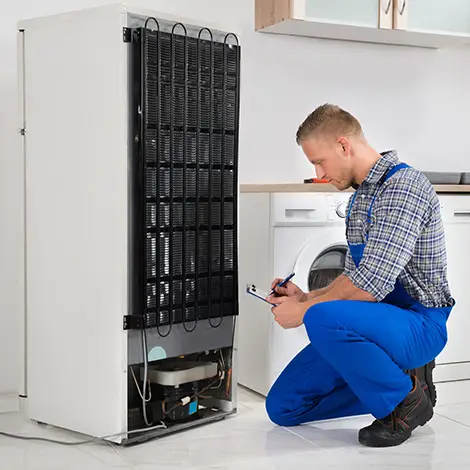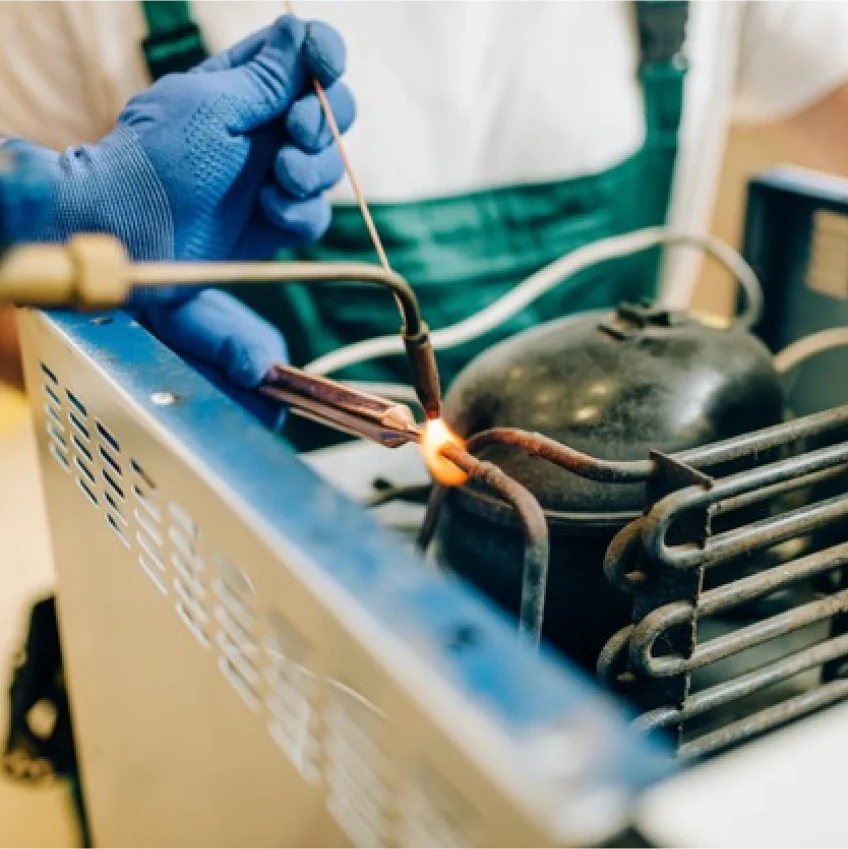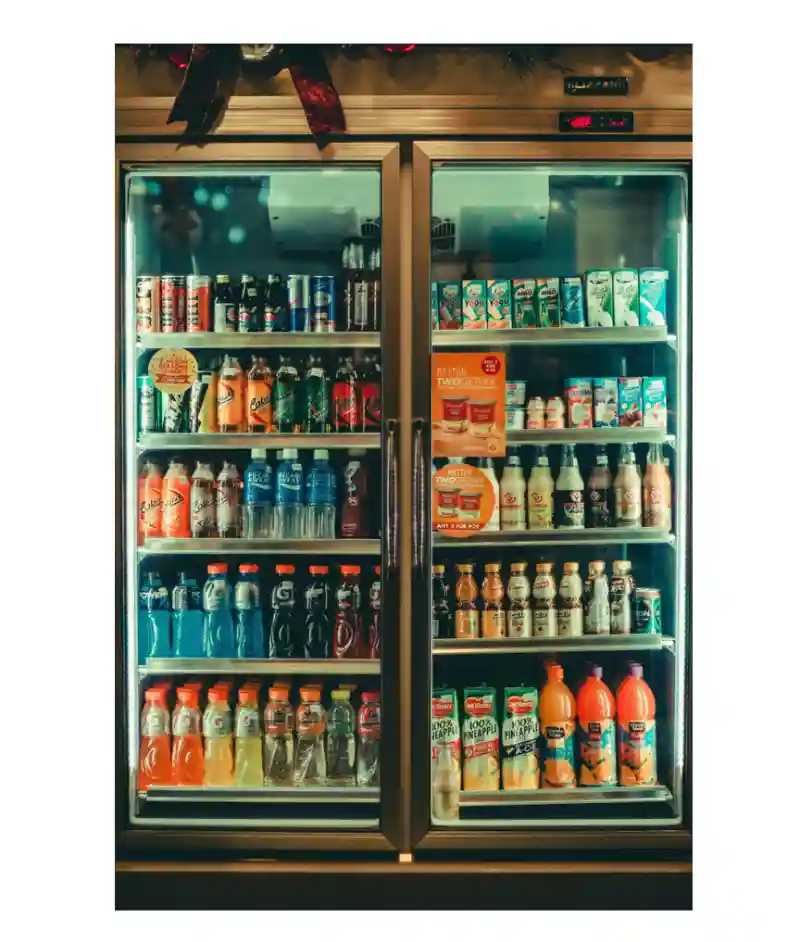
- Author Name: Anatoli Didenco
- Date: Dec, 02 2023
|
Table of Contents |
In the dynamic landscape of the food service industry, the different types of commercial refrigerators play a pivotal role in maintaining freshness and efficiency. From the space-saving wonders of under-counter refrigerators to the grandeur of walk-in units, each type of commercial refrigeration serves a distinct purpose, optimizing storage and enhancing workflow.
Reach-In Refrigerators:
Reach-in refrigerators are indispensable in commercial kitchens, offering a seamless blend of accessibility and efficiency. These upright units, equipped with adjustable shelves, provide an organized storage solution for perishable items. Their versatile design caters to the dynamic needs of busy kitchens, ensuring quick and easy access to ingredients during the culinary process. With various size options available, reach-in refrigerators fit diverse kitchen spaces and are adept at storing a wide array of perishable goods, contributing to the overall functionality of the food service industry.
Pros:
Efficient Organization: Adjustable shelves facilitate optimal space utilization.
Convenient Access: Quick retrieval of ingredients enhances kitchen workflow.
Versatility: Available in various sizes to suit different kitchen layouts.
Diverse Storage: Suitable for a broad range of perishable goods.
Cons:
Limited Capacity: Compared to walk-in refrigerators, storage space is constrained.
Space Consideration: Requires sufficient aisle space, challenging in smaller kitchens.
Temperature Variations: Frequent opening and closing may impact internal temperature consistency.
Energy Consumption: Larger units may have relatively higher energy consumption.
Walk-In Refrigerators:
Walk-in refrigerators stand as the epitome of expansive, high-capacity storage solutions in the commercial sector. These room-sized units are designed for kitchens with substantial inventory needs, providing ample space for organized storage and easy accessibility. Ideal for restaurants, hotels, and large-scale food establishments, walk-in refrigerators ensure a systematic approach to inventory management, allowing staff to navigate within the unit. Their size and versatility make them a cornerstone in preserving the freshness of a diverse range of perishable items.
Pros:
High Capacity: Ample storage space for large quantities of perishable goods.
Organized Storage: Facilitates systematic arrangement and inventory management.
Versatility: Accommodates various types of perishable items.
Accessibility: Staff can walk inside, making retrieval efficient.
Cons:
Space Requirement: Requires a dedicated area due to its substantial size.
Installation Complexity: Construction and installation can be intricate.
Energy Consumption: Operating such a large unit may result in higher energy usage.
Cost: Initial investment and maintenance costs can be relatively high.
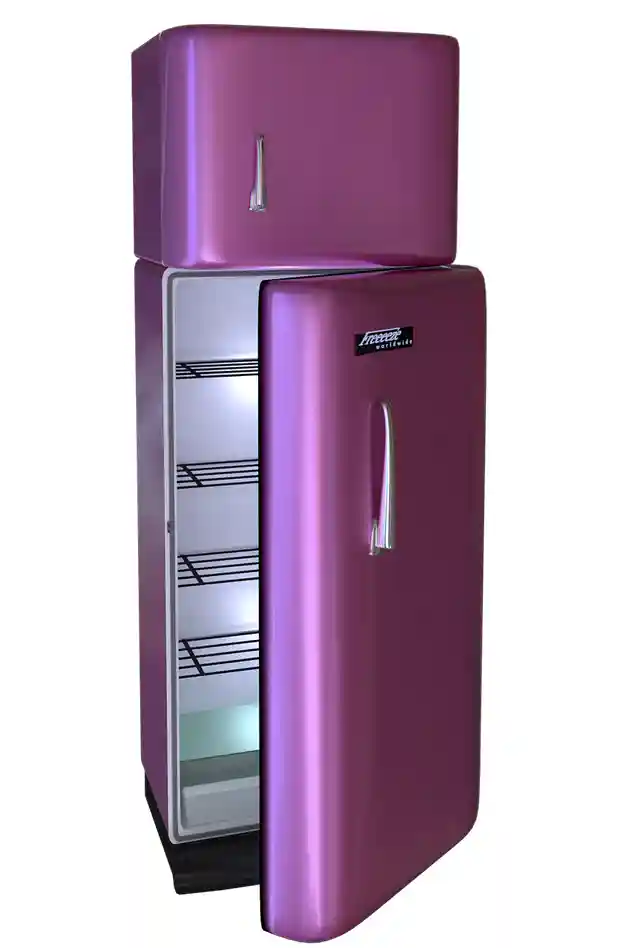
Undercounter Refrigerators:
Undercounter refrigerators are compact yet powerful home appliances that find their niche in commercial kitchens where space optimization is crucial. These refrigerators fit seamlessly beneath countertops, making them ideal for establishments with limited space, such as small cafes or bars. Despite their smaller footprint, under counter refrigerators offer efficient cooling and storage solutions, providing quick access to essential ingredients without sacrificing precious kitchen space.
Pros:
Space Optimization: Fits beneath countertops, maximizing available space.
Convenient Access: Allows for quick retrieval of frequently used items.
Versatility: Suitable for various commercial settings with space constraints.
Energy Efficiency: Generally consumes less energy compared to larger units.
Cons:
Limited Storage Capacity: Not suitable for high-volume storage needs.
Size Restrictions: May not accommodate larger or oddly shaped items.
Temperature Consistency: Frequent opening and closing can affect internal temperature.
Not Ideal for Bulk Storage: Unsuitable for businesses with extensive inventory requirements.
Commercial Display/Refrigerators:
Display refrigerators are the showstoppers of retail and foodservice establishments, designed to showcase products while keeping them fresh. With glass doors or open fronts, these refrigerators provide a visual feast for customers, enticing them to make choices based on presentation. Commonly used for beverages, desserts, or perishable goods, display refrigerators combine functionality with aesthetics, contributing to an appealing and organized retail environment.
Pros:
Merchandising Appeal: Transparent doors or open fronts enhance product visibility.
Customer Engagement: Encourages impulse purchases with attractive displays.
Temperature Control: Maintains product freshness while on display.
Versatility: Available in various sizes and styles to suit different product types.
Cons:
Energy Consumption: Continuous visibility may lead to higher energy usage.
Limited Storage: Display units may have less storage space compared to traditional refrigerators.
Temperature Fluctuations: Open fronts can result in temperature variations.
Maintenance Challenges: Glass surfaces require regular cleaning to maintain presentation.
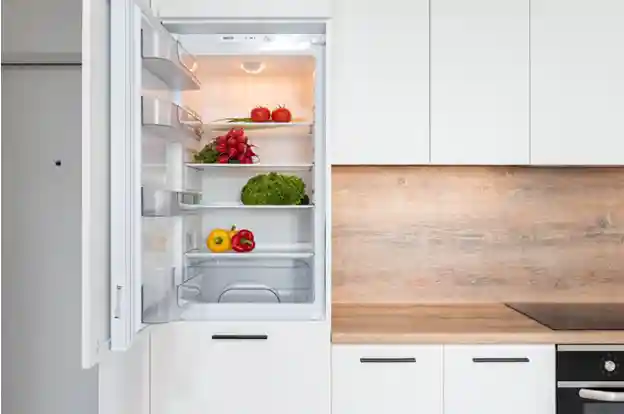
Blast Chillers:
Blast chillers are the unsung heroes of commercial kitchens, swiftly cooling hot food to safe storage temperatures, minimizing bacterial growth, and preserving food quality. These appliances play a critical role in maintaining food safety standards and are essential for businesses prioritizing freshness and adherence to health regulations.
Pros:
Rapid Cooling: Quickly chills hot food to prevent bacterial growth.
Preservation of Quality: Maintains the texture, flavor, and nutritional value of food.
Enhanced Food Safety: Reduces the risk of foodborne illnesses.
Versatility: Suitable for various foods, from soups to delicate pastries.
Cons:
Equipment Cost: Initial investment can be relatively high.
Space Requirement: Requires dedicated space in the kitchen.
Specialized Use: Primarily designed for specific functions.
Energy Consumption: The operation may contribute to higher energy costs.
Pizza Prep Tables:
Pizza prep tables are culinary workhorses designed specifically for the art of pizza making. These specialized refrigeration units provide a dedicated space for assembling pizzas, with raised rails for holding ingredients and refrigerated bases for storing toppings at optimal temperatures. Pizza prep tables are essential in pizzerias and restaurants where efficiency and organization in pizza preparation are paramount.
Pros:
Efficient Pizza Assembly: Raised rails facilitate quick and organized pizza preparation.
Temperature Control: A refrigerated base maintains the freshness of toppings.
Customizable Layout: Adjustable shelves and compartments for personalized organization.
Space Optimization: Combines prep and refrigeration in one unit.
Cons:
Specialized Use: Primarily designed for pizza preparation.
Space Requirement: Requires a dedicated area in the kitchen.
Cost: Initial investment and maintenance costs may be higher.
Not Ideal for General Storage: Limited capacity for non-pizza-related items.
Bar Refrigerators:
Bar refrigerators are compact yet essential appliances in the hospitality industry, designed for use behind bars. These units are tailored to store and cool beverages, garnishes, and other essentials for drink preparation. Bar refrigerators contribute to the efficiency of bartenders by providing easy access to chilled ingredients, ensuring the timely and refreshing creation of drinks in a bustling bar environment.
Pros:
Space Optimization: The compact design fits behind the bar for easy access.
Quick Access: Facilitates swift retrieval of chilled beverages and ingredients.
Temperature Control: Maintains optimal temperatures for drinks and garnishes.
Visibility: Glass doors or open fronts allow visibility for easy restocking.
Cons:
Limited Capacity: Smaller sizes may limit storage space.
Not for Bulk Storage: Unsuitable for storing large quantities of perishable goods.
Energy Consumption: Continuous opening and closing may impact energy efficiency.
Specialized Use: Primarily designed for bar-related items.

Ice Cream Freezers:
Ice cream freezers are the sweet spot of frozen treats, designed to store and display ice cream in commercial settings. These specialized units maintain the optimal temperature for keeping ice cream at the perfect consistency, while transparent lids or glass doors allow customers to peruse flavor options. Ice cream freezers are common in ice cream parlors, supermarkets, and other establishments where frozen desserts are a delightful attraction.
Pros:
Optimal Freezing: Maintains ice cream at the ideal serving temperature.
Visibility: Transparent lids or glass doors showcase available flavors.
Merchandising Appeal: Attracts customers with an enticing display.
Versatility: Suitable for storing various frozen desserts and treats.
Cons:
Limited Storage: Space may be restricted for storing large quantities.
Temperature Fluctuations: Frequent opening and closing can affect internal temperatures.
Energy Consumption: Continuous visibility may contribute to higher energy usage.
Specialized Use: Primarily designed for frozen desserts.
Dual Temperature Refrigerators/Freezers:
Dual-temperature refrigerators/freezers are versatile appliances designed to provide both refrigeration and freezing capabilities within the same unit. This allows businesses to store different types of perishable items at their required temperatures, offering flexibility in food storage and preparation.
Pros:
Versatility: Accommodates both refrigerated and frozen items in a single unit.
Space Optimization: Reduces the need for separate refrigerators and freezers.
Cost-Efficient: Combines functionalities, potentially saving on equipment costs.
Convenient Access: Streamlines kitchen workflow with all-in-one storage.
Cons:
Space Consideration: May require more floor space than a single-function unit.
Temperature Management: Balancing dual temperatures can be challenging.
Energy Consumption: Operating both functions simultaneously may increase energy usage.
Maintenance Complexity: Dual systems might require more intricate maintenance.
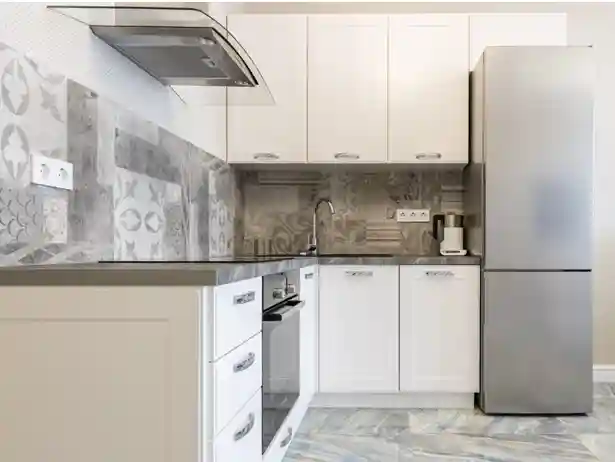
Refrigerated Merchandisers:
Refrigerated merchandisers are eye-catching appliances commonly found in retail environments. These units are designed to showcase and refrigerate products, making them an attractive option for businesses looking to display beverages, snacks, or perishable goods while keeping them at the ideal temperature.
Pros:
Visual Appeal: Transparent doors or open fronts enhance product visibility.
Impulse Purchases: Attractive displays encourage customers to make spontaneous buys.
Temperature Control: Maintains product freshness while on display.
Versatility: Available in various sizes and styles to suit different retail needs.
Cons:
Energy Consumption: Continuous visibility may lead to higher energy usage.
Limited Storage: Display units may have less storage space compared to traditional refrigerators.
Temperature Fluctuations: Open fronts can result in temperature variations.
Maintenance Challenges: Glass surfaces require regular cleaning to maintain presentation.
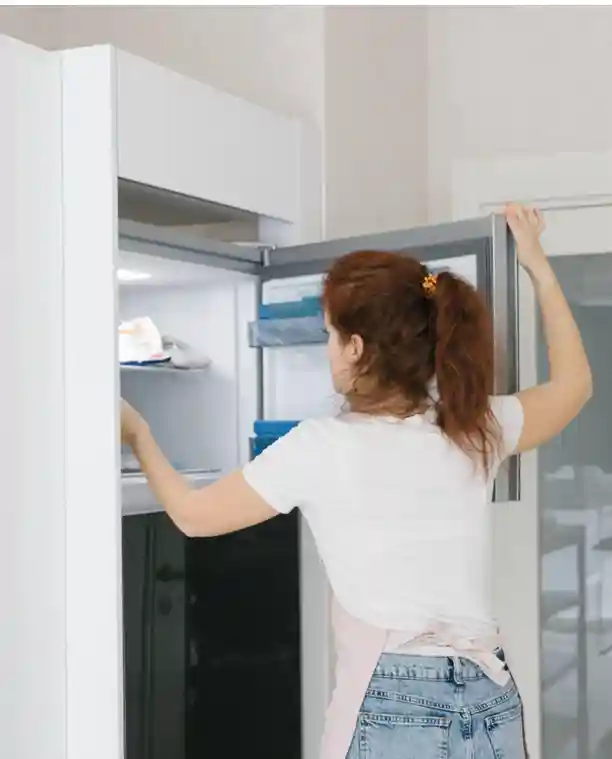
Drawer Refrigerators:
Drawer refrigerators offer a unique and convenient solution for commercial kitchens, providing easy access to refrigerated items with their innovative drawer design. These units are particularly useful in busy environments where chefs need quick and efficient access to ingredients without opening large doors.
Pros:
Space Optimization: Fits seamlessly into kitchen layouts, maximizing available space.
Convenient Access: Pull-out drawers allow for quick retrieval of items.
Organization: Multiple drawers facilitate systematic storage and categorization.
Energy Efficiency: Opening one drawer doesn't impact the entire refrigerator's temperature.
Cons:
Limited Capacity: Drawer units may have less storage space than traditional refrigerators.
Size Constraints: May not accommodate larger or oddly shaped items.
Cost: Initial investment and maintenance costs may be relatively high.
Specialized Use: Best suited for specific storage needs, not ideal for bulk storage.
Specialty Refrigerators:
Specialty refrigerators cater to specific needs within the commercial sector, offering targeted solutions for unique storage requirements. These refrigerators are designed with distinct features to meet the demands of specialized industries or businesses with specific storage needs.
Pros:
Tailored Functionality: Customized features to meet specific storage requirements.
Industry-Specific: Designed for applications such as medical storage, wine preservation, or laboratory use.
Optimized Storage: Specialized compartments and temperature controls for specific items.
Compliance: Meets industry standards and regulations for specialized storage.
Cons:
Cost: Specialized features may come with a higher initial cost.
Limited Versatility: May not be suitable for general storage needs.
Space Consideration: Specific applications may require dedicated space.
Installation Complexity: Specialized units may require intricate installation processes.
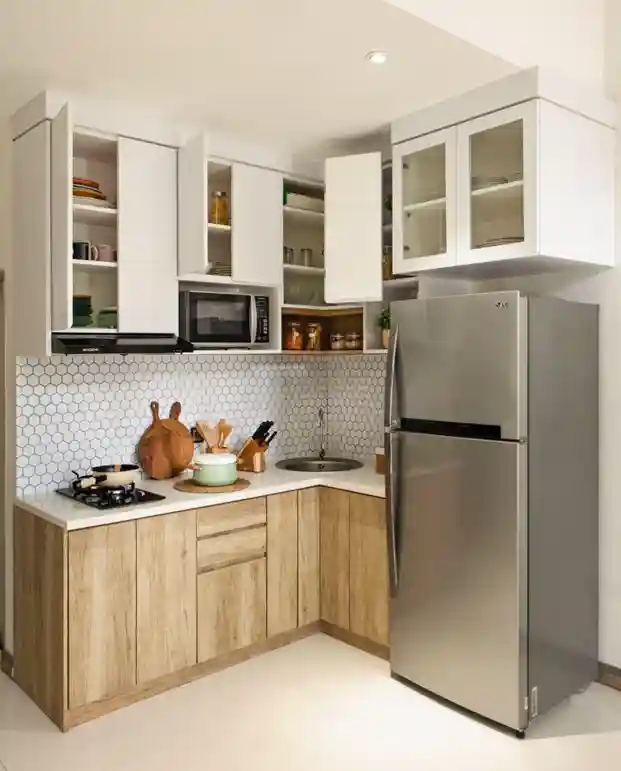
Perfect Appliance Repair excels in delivering top-notch commercial refrigeration repair services. Our team of skilled technicians is equipped with extensive experience and cutting-edge tools to diagnose and address issues with various refrigeration units efficiently. Whether it's a restaurant, supermarket, or any commercial establishment, we prioritize swift and effective solutions, ensuring minimal downtime and optimal performance for your refrigeration systems.
As businesses strive for excellence, choosing the right type of commercial refrigerators becomes paramount. Whether it's the streamlined accessibility of reach-in units or the specialized storage offered by drawer freezer, each type contributes to a seamless culinary operation. By understanding the unique advantages of each, businesses can make informed decisions, ensuring their kitchen setup aligns with specific needs, fostering efficiency, and elevating overall performance.

